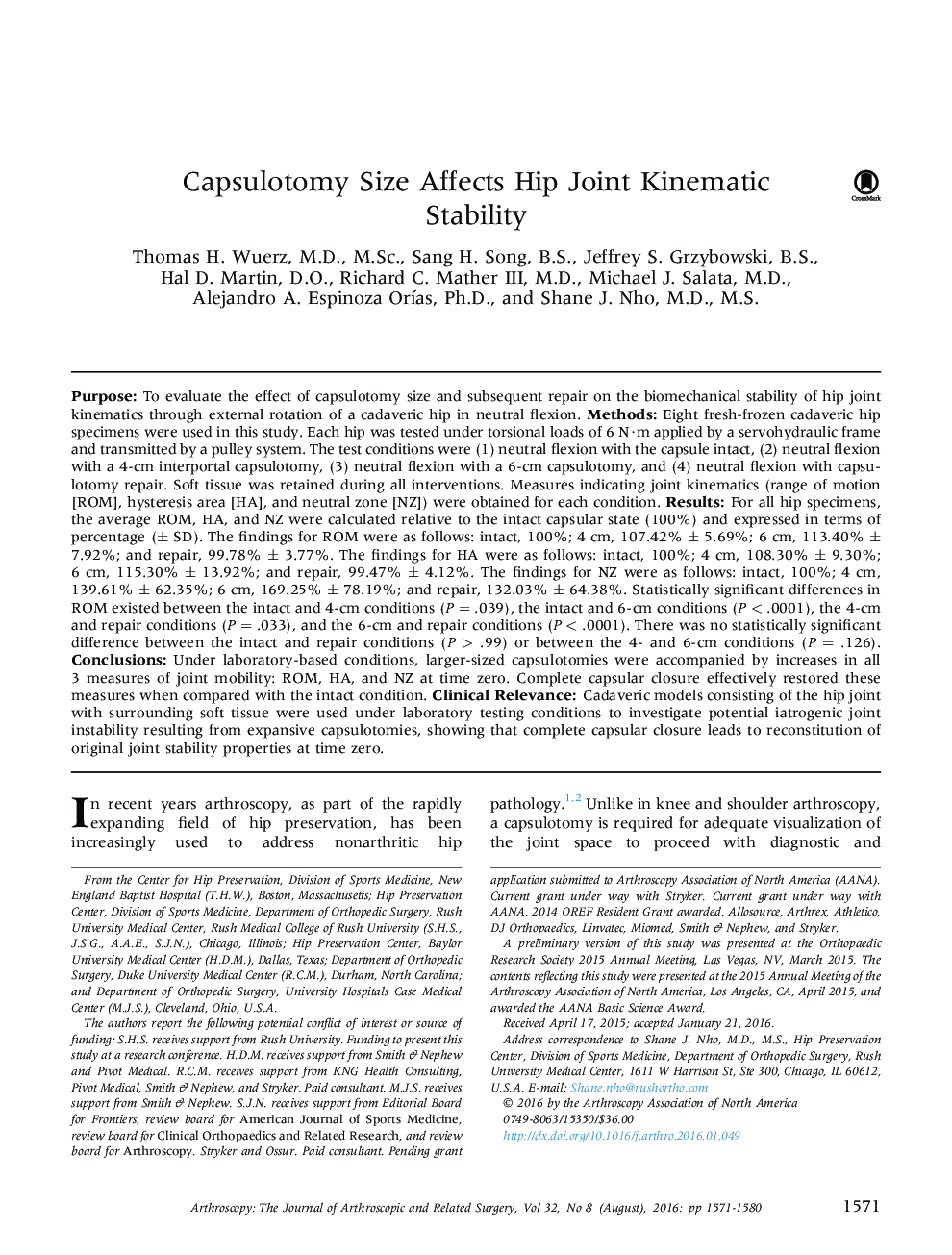| Article ID | Journal | Published Year | Pages | File Type |
|---|---|---|---|---|
| 4041794 | Arthroscopy: The Journal of Arthroscopic & Related Surgery | 2016 | 10 Pages |
PurposeTo evaluate the effect of capsulotomy size and subsequent repair on the biomechanical stability of hip joint kinematics through external rotation of a cadaveric hip in neutral flexion.MethodsEight fresh-frozen cadaveric hip specimens were used in this study. Each hip was tested under torsional loads of 6 N·m applied by a servohydraulic frame and transmitted by a pulley system. The test conditions were (1) neutral flexion with the capsule intact, (2) neutral flexion with a 4-cm interportal capsulotomy, (3) neutral flexion with a 6-cm capsulotomy, and (4) neutral flexion with capsulotomy repair. Soft tissue was retained during all interventions. Measures indicating joint kinematics (range of motion [ROM], hysteresis area [HA], and neutral zone [NZ]) were obtained for each condition.ResultsFor all hip specimens, the average ROM, HA, and NZ were calculated relative to the intact capsular state (100%) and expressed in terms of percentage (± SD). The findings for ROM were as follows: intact, 100%; 4 cm, 107.42% ± 5.69%; 6 cm, 113.40% ± 7.92%; and repair, 99.78% ± 3.77%. The findings for HA were as follows: intact, 100%; 4 cm, 108.30% ± 9.30%; 6 cm, 115.30% ± 13.92%; and repair, 99.47% ± 4.12%. The findings for NZ were as follows: intact, 100%; 4 cm, 139.61% ± 62.35%; 6 cm, 169.25% ± 78.19%; and repair, 132.03% ± 64.38%. Statistically significant differences in ROM existed between the intact and 4-cm conditions (P = .039), the intact and 6-cm conditions (P < .0001), the 4-cm and repair conditions (P = .033), and the 6-cm and repair conditions (P < .0001). There was no statistically significant difference between the intact and repair conditions (P > .99) or between the 4- and 6-cm conditions (P = .126).ConclusionsUnder laboratory-based conditions, larger-sized capsulotomies were accompanied by increases in all 3 measures of joint mobility: ROM, HA, and NZ at time zero. Complete capsular closure effectively restored these measures when compared with the intact condition.Clinical RelevanceCadaveric models consisting of the hip joint with surrounding soft tissue were used under laboratory testing conditions to investigate potential iatrogenic joint instability resulting from expansive capsulotomies, showing that complete capsular closure leads to reconstitution of original joint stability properties at time zero.
